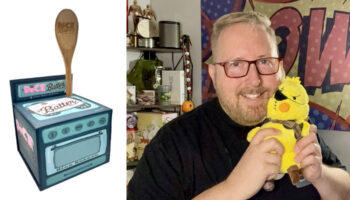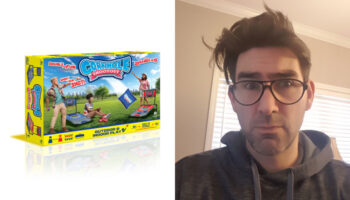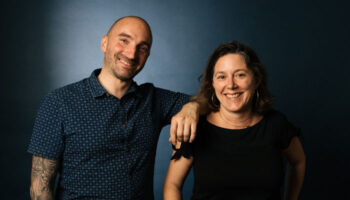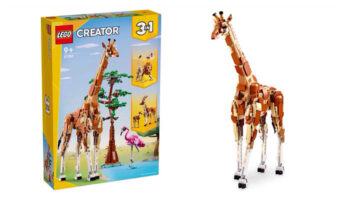Robert Best – VP of Barbie Product Design at Mattel – on working with inventors and keeping the brand fresh

Robert, it’s great to connect. To kick off with your route into design, am I right in thinking you were a fashion designer before you entered the world of toys?
Yes, it was a somewhat circuitous route into toys! I went to school for fashion design at Parsons School of Design with the goal of becoming a fashion designer. I worked in the industry at different design houses, did a lot of fashion illustration and was very happy.
Then my career did a very sharp left turn and I decided to try my luck at Barbie. And it’s interesting because as an illustrator, I was frequently told that my illustrations looked like Barbie… I don’t think I was aiming for that, but I loved Barbie as a kid growing up so it’s always been there in my subconscious. I sent my portfolio to Mattel, they were very interested and the rest is history!
Where did your interest in fashion design come from?
I guess I was just a creative kid. My parents believed that idle hands were the devil’s tools, so they encouraged me to play musical instruments, do sports and try different creative endeavours until I found something that really moved me. I loved old movies and was always sketching costumes and clothes. When I found out that fashion could be a career, it felt like a good fit.
Was that jump from fashion to toys a daunting one?
Well, when you’re young you never think anything will be difficult, so my youthful confidence served me well at that time! Both fashion design and toy design are disciplines that require an attention to detail. It’s a similar brain.
You’re now VP of Barbie Product Design at Mattel. What does the role cover?
I think of my job as breaking down barriers and supporting the creative team as much as possible. Even though it’s an executive role, it’s still critical for me to see the product, experience the product and work closely with my design team and the collaborative teams that help get projects over the finish line. I see my role as being their champion and making sure they have everything they need.
In addition to that, I’m also a steward of the Barbie brand and it’s important to uphold the legacy of this incredible, enduring brand. It’s a role we don’t take lightly at all.

How long have you been with the brand now?
27 years.
Wow! What is it about Barbie that has kept you at Mattel for so long?
Well, it’s a constantly evolving, constantly challenging brand – and one that is open to change. I find that exciting. It’s easy to rest on your laurels, but Barbie as a brand and Mattel as an organisation do not subscribe to that at all. We’re always asking questions… How can we be better? How can we reflect the changing culture and the world around us? How do we evolve? How do we improve?
If we were just doing the same thing over and over, I don’t think I would’ve lasted this long with the brand. Barbie continues to challenge me and provide new creative opportunities. It speaks to fashion, toys, culture, entertainment… The opportunities around Barbie keeps things exciting.
You mention that Barbie keeps evolving, but how do you approach keeping things fresh for a brand that’s been around for more than six decades?
The key is to listen and be open. The minute you pat yourself on the back and consider your job done, that’s the death of any brand. You have to re-evaluate, ask yourself the tough questions and listen. Be open to new ideas, look at the competition and take in the shifts in culture.
And it can be daunting, because when a brand is successful there’s often very little appetite for change. When things go south, that’s when people want to change everything! And in my long tenure, I can say that we’ve experienced both sides. The important thing is to be open to change at a time when people might assume change isn’t needed.
Several Barbie launches each year come from the inventor community. Why are inventors important to the Barbie brand?
Inventors are super important, for me especially, because having come from the fashion world, inventing toys is not native to who I am. So the inventing community is critical because they’re thinking about the toys in a way that I couldn’t dream of.
We have many designers on our team that do have similar brains to inventors, but you only benefit from having a broader pool of incredible minds thinking about your brand. Working with inventors really opens up what the possibilities are around Barbie, and that’s exciting. It educates me and makes me a better designer.

For any inventors reading, what advice would you give them about inventing for the Barbie brand?
Don’t limit yourself to preconceived notions or rigid ideas around what Barbie might be, because you’ll be wrong! Some of our most exciting inventor launches in recent years would seem – on paper – totally antithetical to what ‘the Barbie brand’ represents. The head-to-toe pink view of Barbie is just one simple facet of what has become a very multi-faceted brand that actually covers a lot of ground.
Being open and enthusiastic about the unexpected will serve you well. Go with what you’re passionate about.
If we look back on your 27 years with Barbie, is there a launch that stands out as being important to your design journey with the brand?
For me, it was the launch of the new bodies – or what we called Project Dawn. It was such an important moment in the brand’s history. I’ll be honest, it was important especially as I came from the fashion industry, where there was a school of thought around what an idealised runway model figure looked like. All of that is built into a conversation that has shifted and changed, and Barbie played a role in that. Kids see themselves in their toys, diversity matters, representation matters and it was a significant change. It was a great moment for the brand and I’m proud of the work the team did. We’re actually still seeing the repercussions of it.
It’s also the perfect example of ‘we’re not done’. Anybody from a toy brand or fashion brand who thinks the work is done around helping change the notion of what ‘beauty’ means is kidding themselves. We’re up for the challenge.

How do you fuel your creativity?
I love to travel. Anytime I can get outside of California, where I live, but even where I work. Any change in the routine fuels different thinking. It stems from when I was a little kid. My mother was from El Salvador and we’d visit when I was young. I have distinct memories of the first time going there and seeing people who don’t look like you, live a different life to you, and how that really opens you up to new ideas. That shaped how I fuel inspiration. And it doesn’t have to be about travelling abroad; it’s more about getting out of your comfort zone and thinking differently.
Robert, this has been great. One last question! Later this year will see the arrival of the eagerly anticipated Barbie movie. What effect do you think this will have on the brand?
I hope it unlocks the potential of what Barbie is. I don’t think the person who created the first Captain America comic book ever imagined it would become this behemoth of the entertainment space. And most of these huge entertainment universes are male dominated, so Barbie breaking into that is significant.

I hope the movie creates a franchise filled with opportunities for more great entertainment, because how cool would it be to see a new team of creative people reinterpret what Barbie means for an audience in 2027. We’re on our, what, 10th Batman now? Everyone is still thrilled with that, so we hope Barbie can break through in a similar way!
–
To stay in the loop with the latest news, interviews and features from the world of toy and game design, sign up to our weekly newsletter here



























